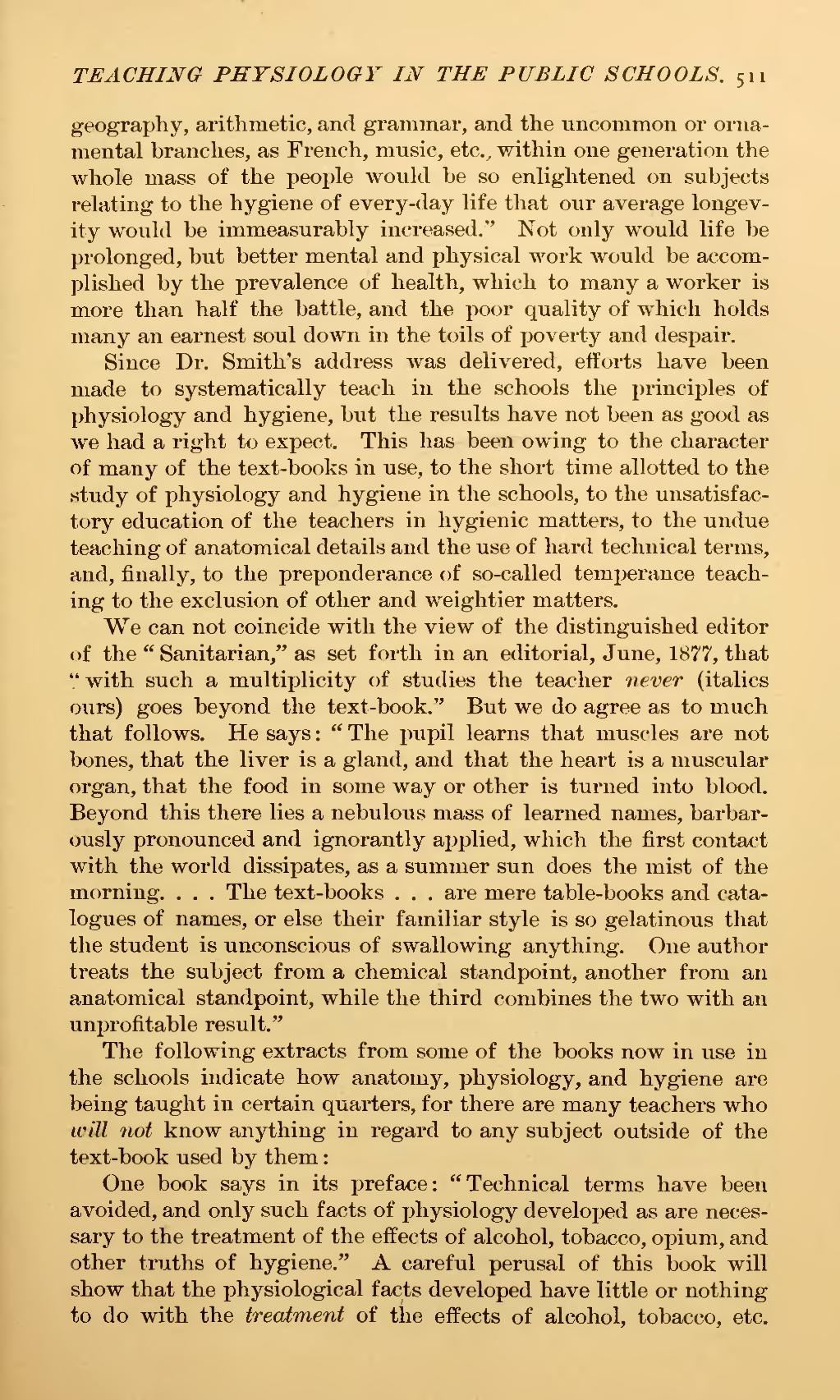geography, arithmetic, and grammar, and the uncommon or ornamental branches, as French, music, etc. within one generation the whole mass of the people would be so enlightened on subjects relating to the hygiene of every-day life that our average longevity would be immeasurably increased." Not only would life be prolonged, but better mental and physical work would be accomplished by the prevalence of health, which to many a worker is more than half the battle, and the poor quality of which holds many an earnest soul down in the toils of poverty and despair.
Since Dr. Smith's address was delivered, efforts have been made to systematically teach in the schools the principles of physiology and hygiene, but the results have not been as good as we had a right to expect. This has been owing to the character of many of the text-books in use, to the short time allotted to the study of physiology and hygiene in the schools, to the unsatisfactory education of the teachers in hygienic matters, to the undue teaching of anatomical details and the use of hard technical terms, and, finally, to the preponderance of so-called temperance teaching to the exclusion of other and weightier matters.
We can not coincide with the view of the distinguished editor of the "Sanitarian," as set forth in an editorial, June, 1877, that "with such a multiplicity of studies the teacher never (italics ours) goes beyond the text-book." But we do agree as to much that follows. He says: "The pupil learns that muscles are not bones, that the liver is a gland, and that the heart is a muscular organ, that the food in some way or other is turned into blood. Beyond this there lies a nebulous mass of learned names, barbarously pronounced and ignorantly applied, which the first contact with the world dissipates, as a summer sun does the mist of the morning. . . . The text-books. . . are mere table-books and catalogues of names, or else their familiar style is so gelatinous that the student is unconscious of swallowing anything. One author treats the subject from a chemical standpoint, another from an anatomical standpoint, while the third combines the two with an unprofitable result."
The following extracts from some of the books now in use in the schools indicate how anatomy, physiology, and hygiene are being taught in certain quarters, for there are many teachers who will not know anything in regard to any subject outside of the text-book used by them:
One book says in its preface: "Technical terms have been avoided, and only such facts of physiology developed as are necessary to the treatment of the effects of alcohol, tobacco, opium, and other truths of hygiene." A careful perusal of this book will show that the physiological facts developed have little or nothing to do with the treatment of the effects of alcohol, tobacco, etc.
